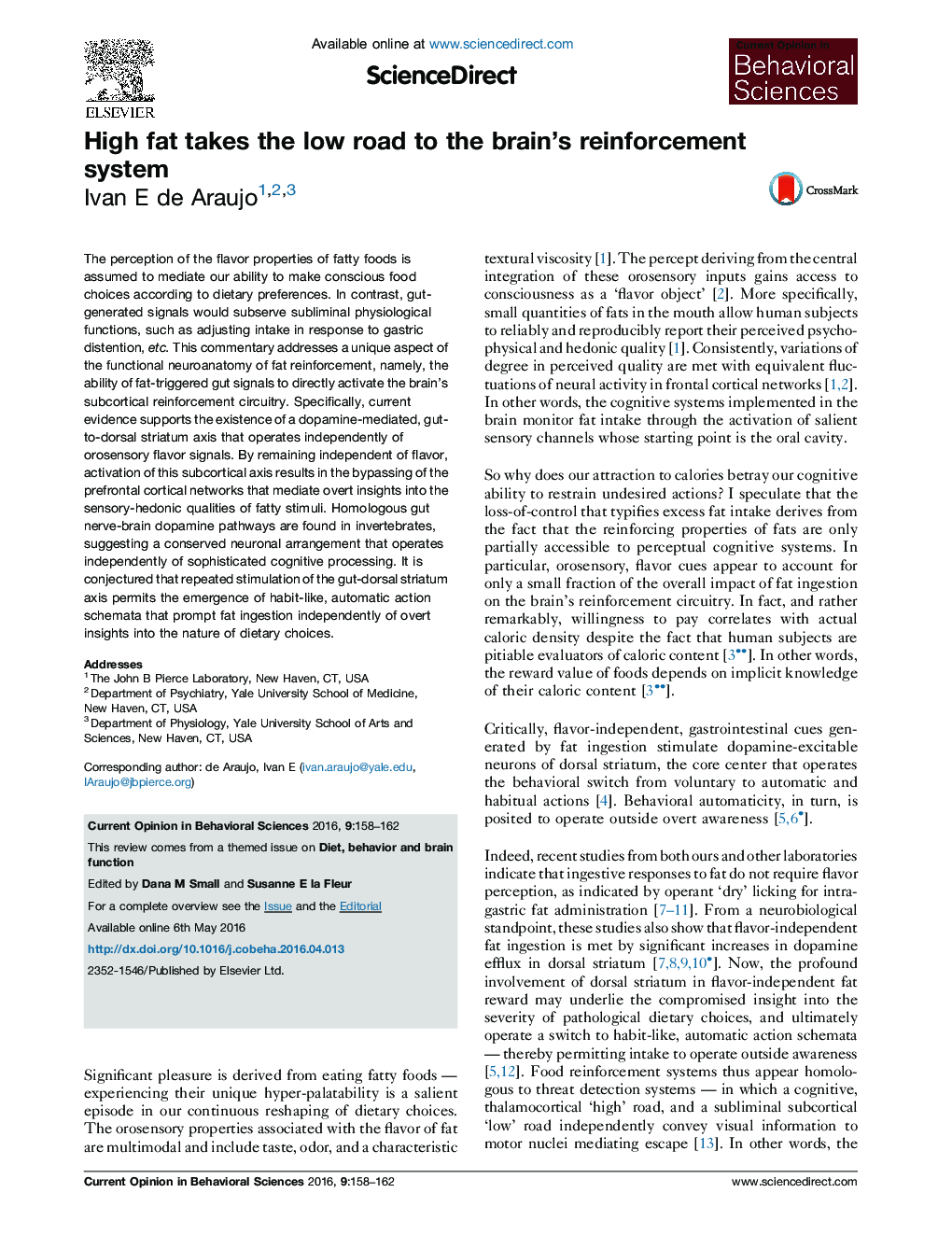| Article ID | Journal | Published Year | Pages | File Type |
|---|---|---|---|---|
| 6260622 | Current Opinion in Behavioral Sciences | 2016 | 5 Pages |
â¢Conscious perception of flavor is believed to mediate food choice and appraisal.â¢A gut-to-dorsal striatum axis operates independently of flavor.â¢Recurrent activation of the axis forms novel automatic ingestive schemata.â¢This mechanism precludes overt insights into dietary choice.
The perception of the flavor properties of fatty foods is assumed to mediate our ability to make conscious food choices according to dietary preferences. In contrast, gut-generated signals would subserve subliminal physiological functions, such as adjusting intake in response to gastric distention, etc. This commentary addresses a unique aspect of the functional neuroanatomy of fat reinforcement, namely, the ability of fat-triggered gut signals to directly activate the brain's subcortical reinforcement circuitry. Specifically, current evidence supports the existence of a dopamine-mediated, gut-to-dorsal striatum axis that operates independently of orosensory flavor signals. By remaining independent of flavor, activation of this subcortical axis results in the bypassing of the prefrontal cortical networks that mediate overt insights into the sensory-hedonic qualities of fatty stimuli. Homologous gut nerve-brain dopamine pathways are found in invertebrates, suggesting a conserved neuronal arrangement that operates independently of sophisticated cognitive processing. It is conjectured that repeated stimulation of the gut-dorsal striatum axis permits the emergence of habit-like, automatic action schemata that prompt fat ingestion independently of overt insights into the nature of dietary choices.
